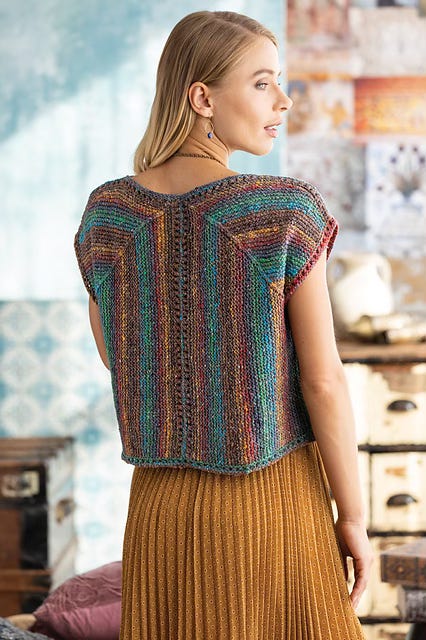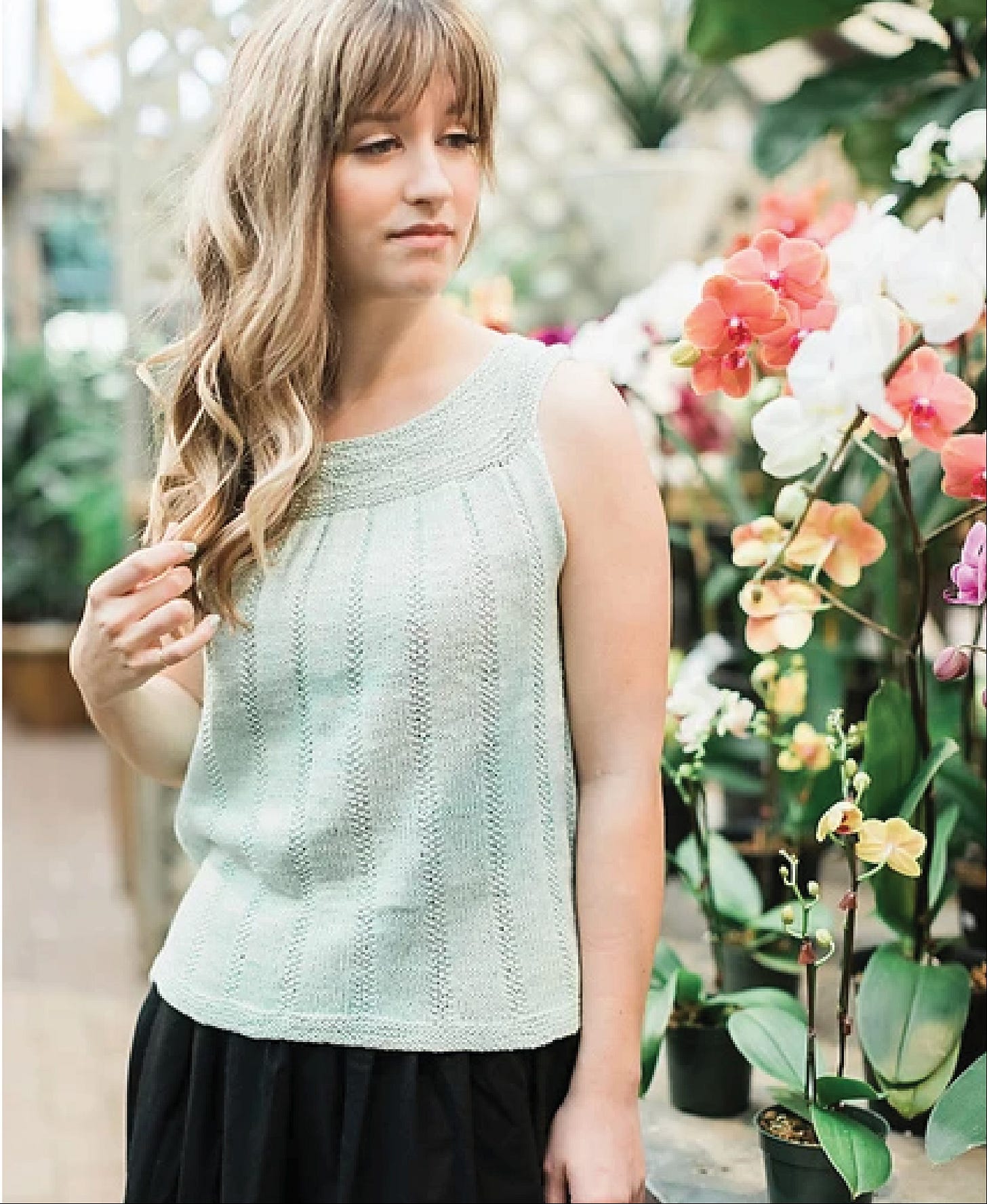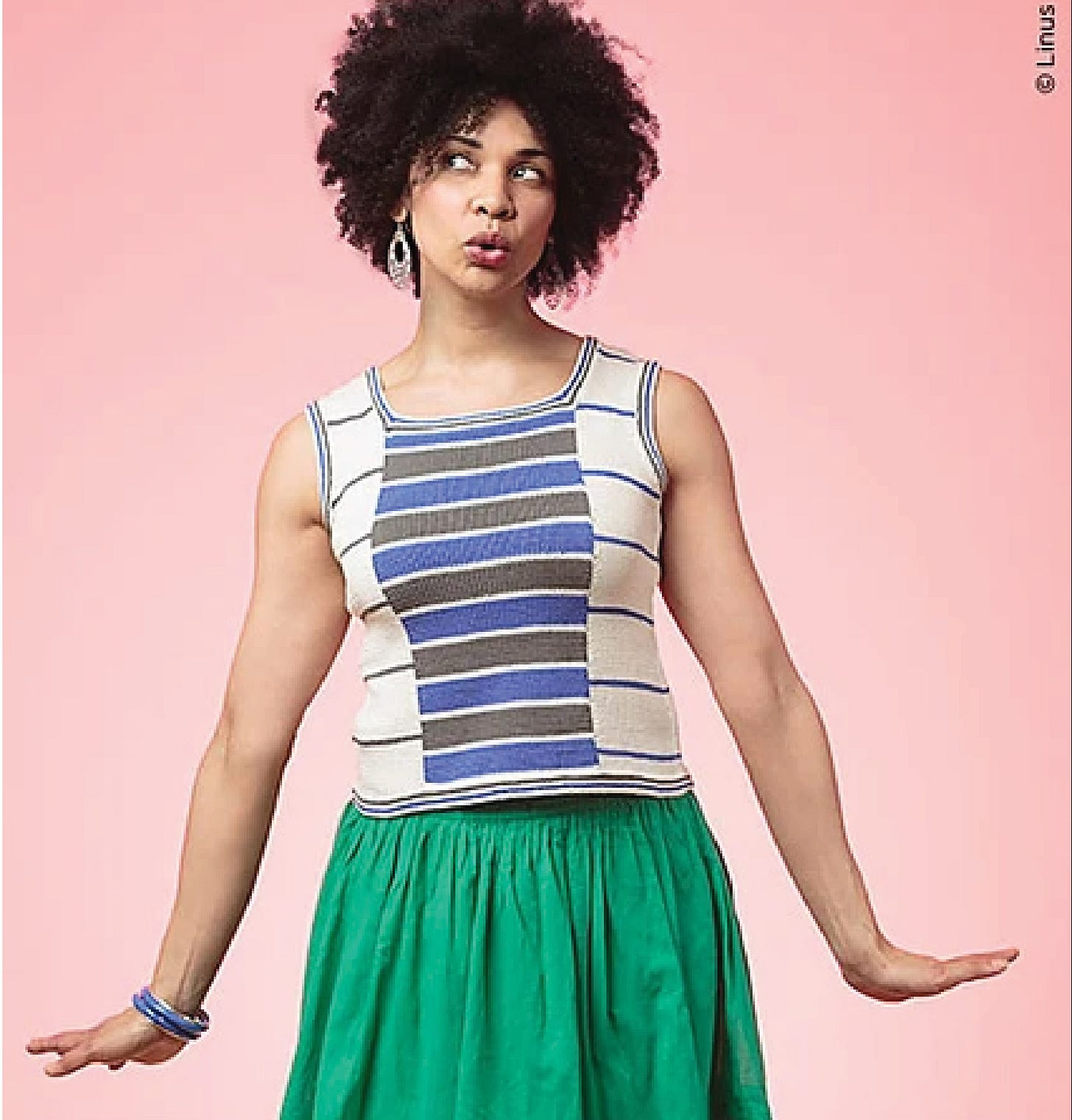Maybe it's just me. Maybe I'm the only one who enjoys knitting garments that have no real place in my wardrobe. But I don't think so.

I suspect there are many knitters who have drawers, shelves, and bins packed with finished projects they enjoyed making, but never wear. Whether you call yourself a "process knitter" or a "project knitter", investing time and money in something that never sees the light of day might make you feel a little queasy. No wonder we hide these projects behind closed doors instead of admitting to and addressing the problem.
I propose we bring those projects out of hiding and talk about how to deal with the disconnect between what we want to knit and what we want to wear.
What I Want to Knit
I like to knit interesting garments. I like to explore stitch patterns, intricate colorwork, and innovative techniques. I love knitting with cotton and linen, and I love warm weather knits because no sleeves means a faster finished project. I love working with traditional wooly wools, where the yarn tells the story of the sheep who grew the fiber.

What I Want to Wear
The garments I wear most often are simple, classic, and smooth. Most are solid colored or striped. I do not enjoy wearing garments that are bulky or that have a lot of texture.
I live in the southeastern United States. I am delighted to wear a wool sweater when the weather is cold, but that's only 3–4 months of the year. My most-worn sweaters are stockinette stitch, sometimes with stripes or colorwork, or made with a tweedy yarn.
I rarely wear handknits the rest of the year. It gets hot where I live. From May through October, daily high temperatures average 75–95 degrees Fahrenheit, and that's without accounting for the humidity.
I work at home. Most of my days are spent sitting in my home office in front of a computer. My daily uniform is one of a half-dozen simple cotton or linen shift dresses sewn by me. I like this one and this one. If I need to leave my apartment, I add a bra, shoes, and a simple linen cardigan.
The Disconnect
You can see the gap, can't you? I knit a beautiful heavily cabled sweater a couple of years ago. It fits perfectly, but I rarely wear it. All those cables create too much texture for my comfort. Same with this sweater, which I made in a gorgeous merino and cashmere blend. Both occupy space in my sweater drawer, but not in my wardrobe.
Those lacey, sleeveless, cotton/linen summer tops I like to knit? I never wear them. They feel "too fancy" for most of my days, or they demand to be worn with an under-layer.

We haven’t even mentioned quantity. How many wool sweaters is enough when the season for wearing them is just so short? Maybe six pullovers and six cardigans? In the abstract that seems like plenty, but I'd have a hard time winnowing down my collection to meet those targets.
Where is Your Disconnect?
Do you knit loads of wool socks, but spend most of your life in sandals? Are intricate lace shawls your jam, but you never wear them out in the world? Do you follow the work of a favorite designer, eagerly participating in every knit-a-long, but never integrating the results into your wardrobe?
You're among friends here. Tell us about your disconnect in the comments.
Strategies for Resolving the Disconnect
Obviously, "just stop knitting" is not a viable strategy.
As a designer, I can often scratch the itch for knitting intricate patterns without having to deal with the resulting garment. The publisher often retains the sample.
For socks, mittens, cowls, scarves, and the wooly hats I love to knit when I'm test driving a new yarn, I have a box in my yarn closet designated for donations. These projects go directly into the box. When the box is full, I seal it up and ship it to Knit the Rainbow.
I have a friend living in upstate New York who has a large extended family. They are always happy to be the recipients of her handknits. Whenever she knits a sweater that doesn't quite hit the mark, her daughter is quick to claim it.
As for the collection currently crowding my sweater drawer, here is my plan:
Before cold weather returns, I'll pin a tag to the front of each sweater. As a sweater is worn, I'll remove the tag. Any piece that still bears a tag when spring comes around again will be donated.
I have only one sweater that will be exempt from this culling program. I knit a chunky Shetland wool Circumnavigated cardigan for my late father more than 20 years ago. After his death, my mother returned the cardigan to me. The sweater is much too big for me, but it is carefully packed away as a memento of my dad.
And moving forward? Before I commit to knitting something for myself, I will consider how the finished garment will fit into my wardrobe. If it isn't something I'll wear often, I'll try to quell the urge by knitting a generous swatch, or by using the stitch or technique in a small project I can donate. Or I’ll work it up into a design submission and see if I can sell the design to a publisher.
Are you content to hang on to all your projects, whether you wear them or not? If not, how do you keep the collection under control? Share your thoughts in the comments.
While cranking along on a design commission over the Independence Day holiday weekend (a lacy tank top I'd never wear), I listened to a lovely book by Tracy Chevalier: At the Edge of the Orchard.
Chevalier is best known for her 1999 novel Girl With a Pearl Earring, which was adapted into a film starring Scarlett Johansson and Colin Firth in 2003. Her meticulously researched books fall into the category of historical fiction. Unlike most, which are set in Britain or Europe, At the Edge of the Orchard is an American story.
This novel tells the story of the Goodenough family, pioneers in the 1830's who have settled in the unfortunately named Black Swamp in northwestern Ohio. James is a hardworking man, obsessed with cultivating the 50 apple trees required to validate their claim on the property. His wife Sadie is a querulous woman far more interested in the applejack they make with the fruit. This is not the story of a happy family.
We follow the youngest Goodenough son, Robert, as he heads west to escape the tragedy at home. He eventually finds work as a plant collector in northern California, gathering seeds and seedlings for shipment to the wealthy landowners of England.
Robert is an engaging protagonist, too young to be out on his own, falling in with bad company, and eventually creating a life that feeds his love of the land, while allowing him to keep his secrets.
If you enjoy sweeping family sagas with some solid nature writing thrown in, you'll love At the Edge of the Orchard.
Book titles are linked to Bookshop.org, a non-profit that supports independent bookstores. These are affiliate links—if you make a purchase using these links, I will earn a small commission at no additional cost to you.
Some things that caught my eye
The New York Times has begun publishing their picks for the best 100 books from 2000-2024. As a fun feature, the article includes check boxes for each title so you can indicate "read" or "want to read". As of this writing, they've published entries 41–100, with the remaining 40 books to come later this week. So far, I've read 14 of the books, and added 5 to my "want to read" list. How about you?
This lovely video shows how English leavers lace is made, and why it's literally a dying art. Sad and beautiful.
Enough, already. Once again, I’ve had trouble cutting my thoughts short. Thanks for hanging in there to the end. I appreciate you, and I look forward to reading about your want to knit/want to wear disconnects in the comments!






Excellent topic! I am off to my knitting group in 15 minutes and am going to bring it up. When the "one skein shawls" came out, I loved knitting them. You could buy a pricey yarn because you only needed one. But! I hat WEARING shawls. Always fussing with them, slipping off, not really practical at all!
Must say Sandi you create posts that are as intricate as your knits! Love everything you have treated us with today! And yes, the video of the marching on of the last of the English leavers lacemakers is sad and beautiful. Thank you for providing the link. So many good links! I am very tempted by your Millsweet pattern! Love your summer dress patterns, too. In today's world there has to be a pocket for our cells!
Little by little I am letting go of the knits that I do not wear. We have lots of second-hand shops that welcome such things. I am even letting go of some yarn this way. One of our yarn shops has a little wooden 'book donation box' at the door that they have converted into a 'hat and mitten donation box.' Customers help keep it full of free items. I love this idea. And love your suggestion of doing tests of yarn by knitting a beanie or other such usable item. Our local hospital not only welcomes beanies but also welcomes knitters to sit and knit with patients!